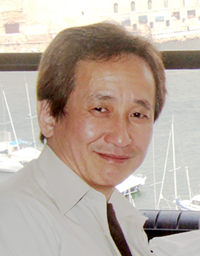
JET2019 Announcement
It will be a great pleasure and honor for me, Kazushi Urasawa of the Tokeidai Memorial Hospital, to preside as Chair over the next Japan Endovascular Treatment Conference of 2019 (JET2019). The JET2018 meeting chaired by Dr. Yoshiaki Yokoi was a great success with over 2000 participants, the largest to date. I would like to sincerely thank all of the participants for their strong support and contributions to this past 10th anniversary meeting.
JET2019, held from February 22nd (Fri) – 24th (Sun), will thus be the 11th JET symposium. In these past 10 years, we have seen remarkable development in endovascular therapy in Japan. And I strongly feel that JET has played an important role in such revolutionary advances. It can be said that the size and content of the JET symposiums, the high technical skills for the live demonstrations, and the quality of the lectures and presentations are now on par with LINC in Europe and VIVA in the United States. In the next decade, I believe JET will continue to contribute to the further development of peripheral vascular treatment.
The lag that Japan had experienced in introducing and obtaining approval for new devices as compared to other countries has gradually been resolved. Domestic trials for drug-coated balloons (DCB) have been concluded and they should be available for general use by the end of 2018. Until now, self-expandable stents had been the primary mode of interventional therapy for femoropopliteal artery disease. However, we can expect a paradigm shift in treatment strategies from stent to non-stent approaches with new devices such as DCBs.
When compared with other countries, patients with peripheral vascular disease in Japan have more complex backgrounds such as being very elderly or having a higher rate of diabetes. Many are also on dialysis. Thus, the DCB results of other countries may not be applicable to the Japanese population. After the introduction of DCBs into Japan, it will be necessary to collect and analyze real-world data (RWD) in order to identify lesions or patient groups that will most benefit from DCB treatment. Based on these analyses, guidelines for DCB use that take into account medical economics will also need to be established, thus reducing medical costs related to SFA intervention. I strongly believe that JET will play a vital role in these future endeavors.
Presently, we are working with the members of the Program Committee to organize JET2019 with an attractive and event-filled agenda including live demonstrations, debate sessions, and round table discussions. There will also be educational tutorials and hands-on sessions to sharpen your skills and knowledgebase. In addition to these programs, the latest clinical trials will be disclosed and best presentation awards will be conferred to encourage younger members. We also plan to invite many expert speakers from both Japan and overseas for more active and in-depth discussions and exchanges.
The venue will be the TKP Garden City Shinagawa Conference Center which is located near the JR Shinagawa Bullet Train station and offers excellent access to Haneda Airport. We sincerely hope for your further cooperation and welcome your active participation in the next JET2019 symposium.
Kazushi Urasawa, MD,PhD, FJCC
President, JET2019
Director of the Cardiovascular Center
Vice President
Tokeidai Memorial Hospital

